
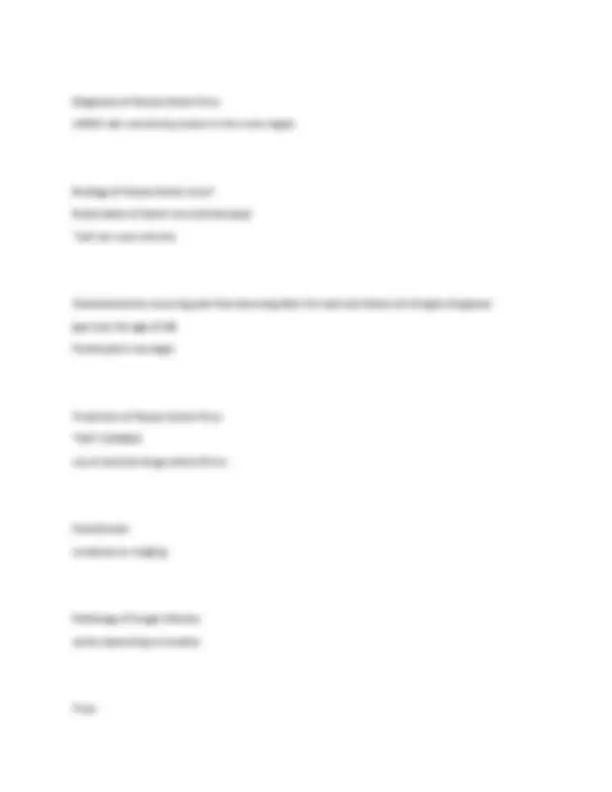






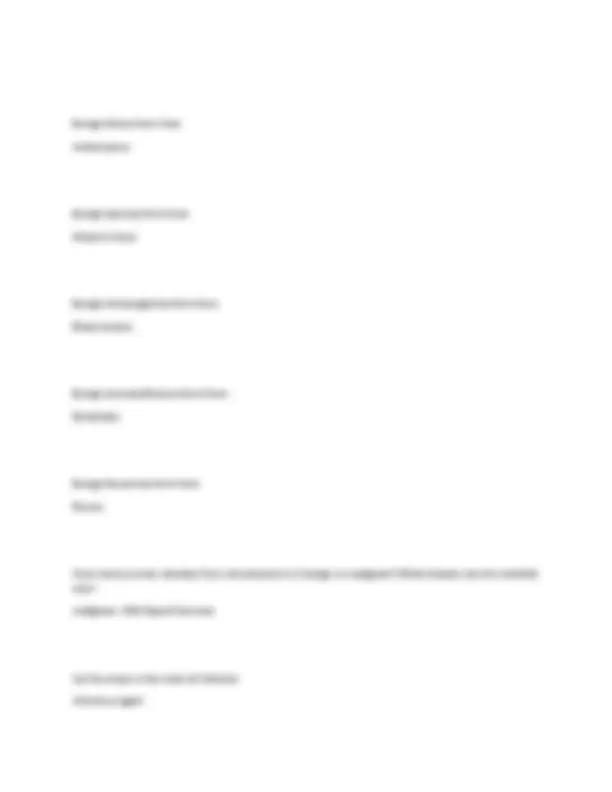

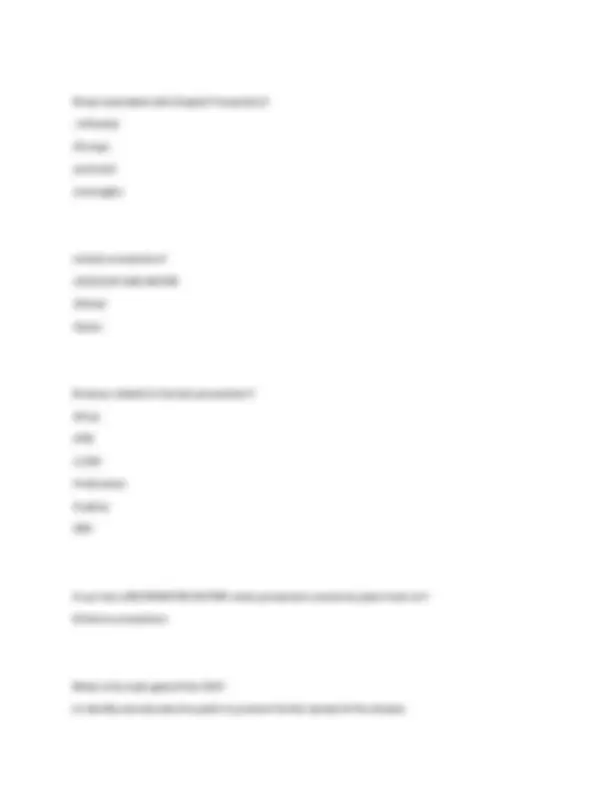
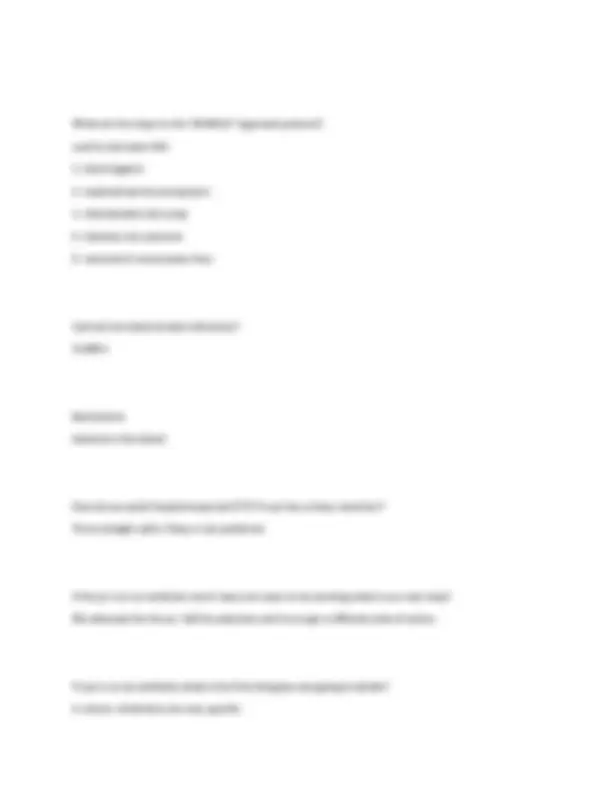
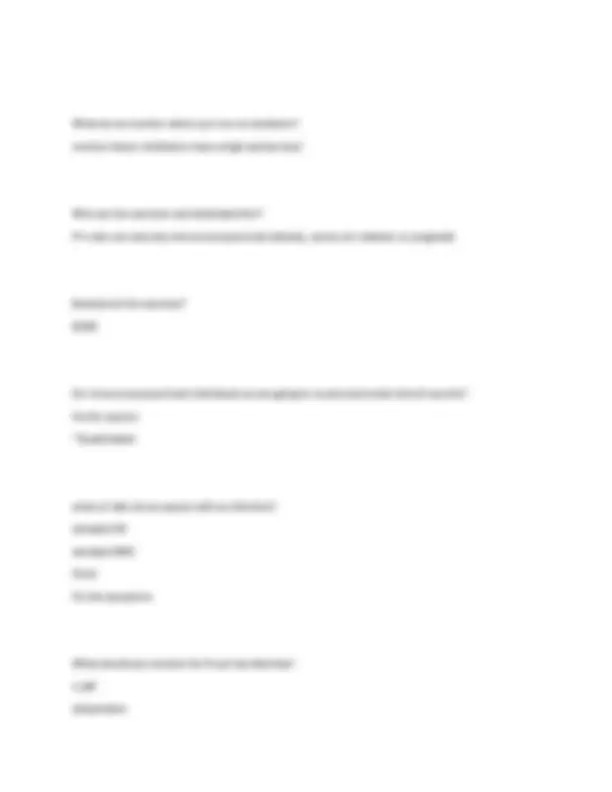
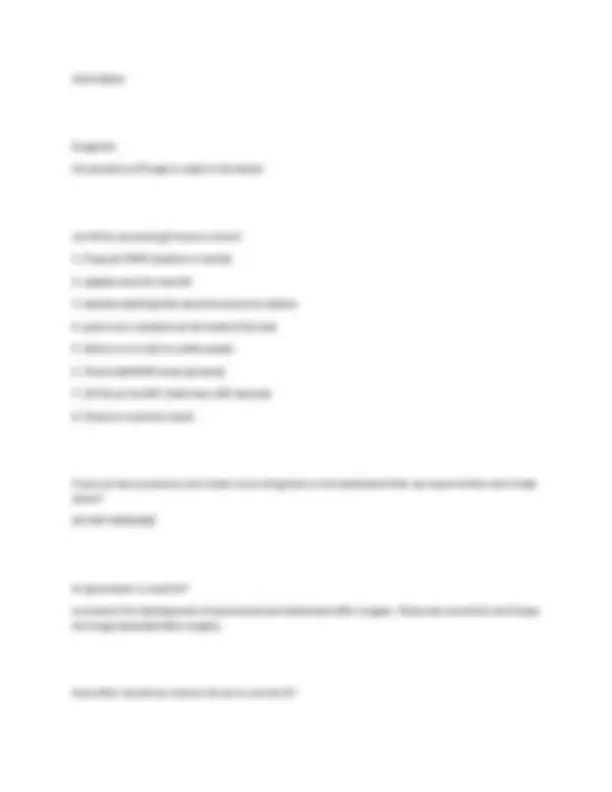
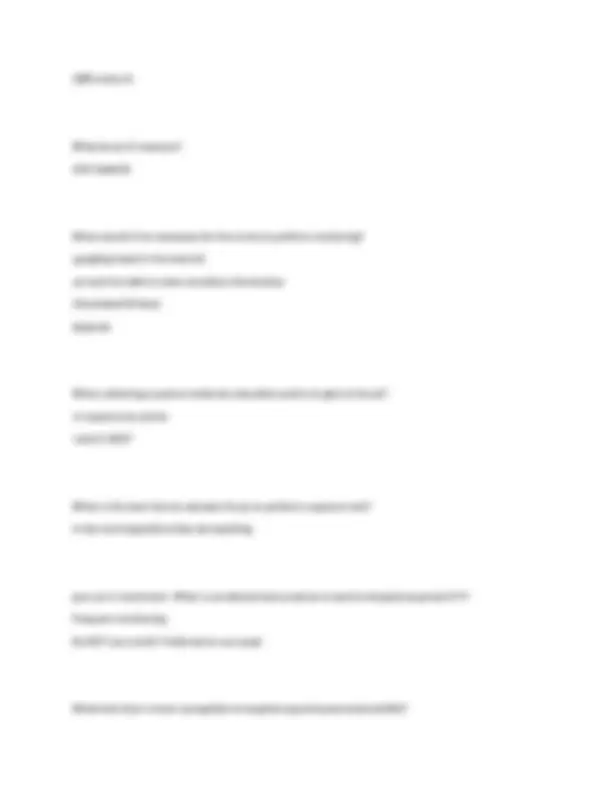
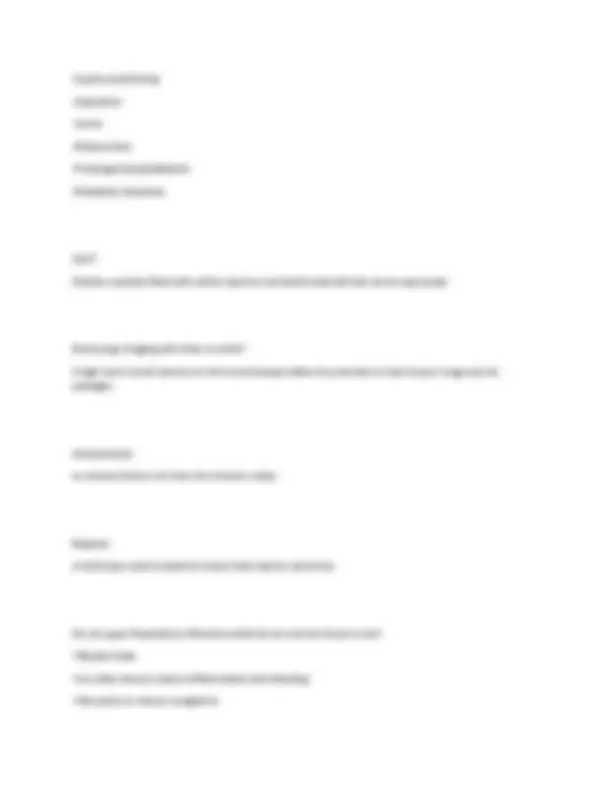
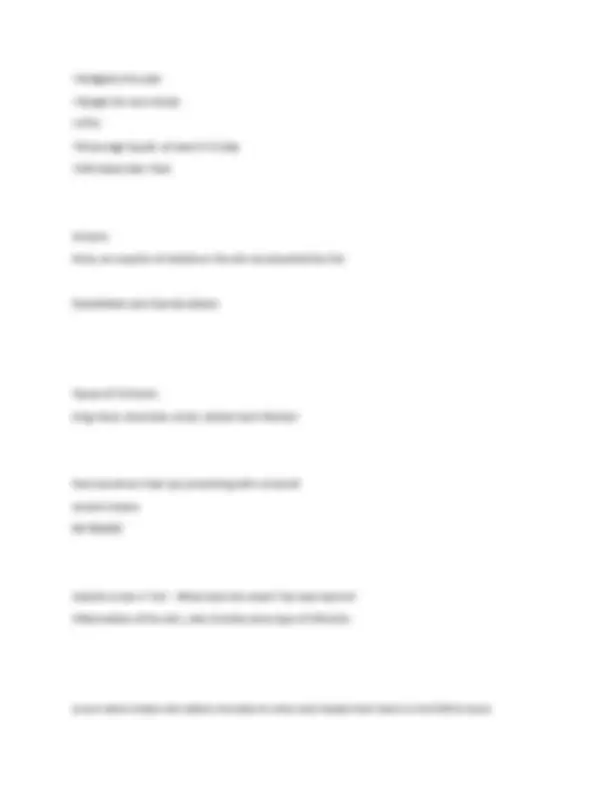

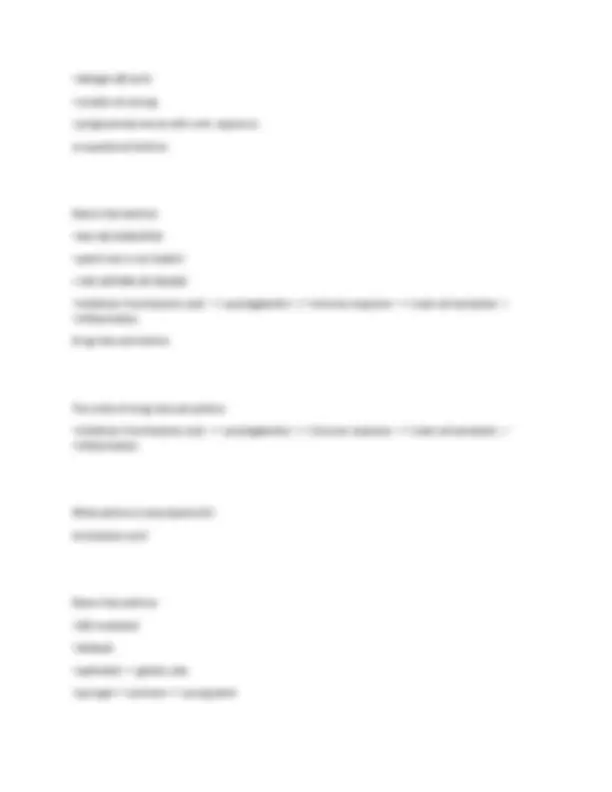



Study with the several resources on Docsity

Earn points by helping other students or get them with a premium plan


Prepare for your exams
Study with the several resources on Docsity

Earn points to download
Earn points by helping other students or get them with a premium plan
Community
Ask the community for help and clear up your study doubts
Discover the best universities in your country according to Docsity users
Free resources
Download our free guides on studying techniques, anxiety management strategies, and thesis advice from Docsity tutors
A collection of questions and answers related to skin conditions and infections, covering topics such as scabies, herpes simplex virus, shingles, fungal infections, yeast infections, impetigo, seborrheic dermatitis, psoriasis, acne vulgaris, atopic dermatitis, contact dermatitis, rocky mountain spotted fever, lyme disease, pediculosis, bedbugs, and benign and malignant tumors. It also includes information on the chain of infection, infection control measures, and common nursing interventions.
Typology: Exams
1 / 27

This page cannot be seen from the preview
Don't miss anything!




















CM of Scabies? Most commonly seen on what parts of the body? Linear rash that goes up. Most common areas:
HSV 2 is located? Genitalia area A pt may describe this as discomfort or low level pain. Herpes Simplex Virus How long is Herpes Simplex Virus is considered 'self limiting' 2 wks; 10-14 days Shingles or chicken pox Herpes Zoster Virus this viral infection lays dormant on the dorsal root ganglia and usually occurs in pt's that have had chicken pox. Herpes Zoster Virus acute localized inflammatory disease of a dermatomal segment of the skin Shingles Patient complains of extreme pain. s/s: unilateral vesicles/ tingling Herpes Zoster Virus
Superficial fungal infection Tinea capitis fungal infection of the scalp Tinea barbae fungal infection of the beard Tinea faciei fungal infection of the face Tinea corporis fungal infection of the trunk Tinea manus and pedis fungal infection of the hand and foot Tinea cruris fungal infection of the groin; jock itch CM of Superficial fungal infection
Patho of Seborrheic Dermatitis High oil gland secretion Inherited autoimmune disease; immune system attacks itself. Psoriasis Chronic skin of papules and plaque of 'silvery scales'; prone to bleeding patho of psoriasis Arises when sludging of sebaceous oils; causing obstruction of follicular canal (Accumulation of oil) Acne Vulagris involves sex hormones, heredity, bacterial flora of skin, stress and cosmetic use Acne Vulgaris Can be chronic; excessive dryness and inflammation; most common in children. Atopic Skin Dermatitis patho of Contact dermatitis Exposed to high levels of irritant; sensitive to certain agents If a pt is presenting with contact dermatitis what is the most important nursing intervention
remove the irritant pt is presenting with the following s/s:
Ticks only burrow? Their head Lyme disease is endemic to? in an area with white tailed deer three stages of Lyme disease (stage 1) Papules that itch and burn Lyme disease (stage 2) meningitis, CN palsies, and peripheral neuropathy Lyme Disease (stage 3) oligoarticular arthritis if a pt present with a bullseye rash what would this indicate? Lyme disease Eggs Laid in your skin Scabies
Pathogenesis of scabies Eggs are laid by the mite on the stratum corneum and hatch into larvaes in 3-4 days What kind of precautions for a pt with scabies? Contact, gloves and gowns ISOLATION! Sarcoptes scabiei is a? another name for mite pediculosis lice Patho of lice louse bite the skin, eats every 4-6 hrs, females lay eggs (nits) and lives for 30 days Etiology of Lice Contact from surface Feed on human blood bite only seen on the surface lice
How do you as the nurse assess a mole? the ABCDE'S
Benign Moles form from melanocytes Benign lipomas form from Adipose tissue Benign Hemangiomes form from Blood vessels Benign dermatofibroma form from fibroblasts Benign Neuormas form from Nerves if you have a tumor develop from reticulocytes is it benign or malignant? What disease can this manifest into? malignant. AKA Kaposi Sarcoma List the steps in the chain of infection infectious agent
Handwashing Eukaryotic Microorganisms; can be superficial, sub q, or systemic. Mostly Opportunistic Fungi Establish themselves with, and benefit from, another organism parasites (pinworms, tapeworms) Inhalation of dust that contains fungus tend to be more serious host's immune system is compromised Systemic Fungi Airborne precautions Hand hygiene
If a pt is taking a new medication and calls you and says "i have developed a rash." What is your NI? DO NOT tell the pt to stop taking the medicine. Have the pt call their dr and educate the pt that their medication are more likely to change. Why does pruritis occur? release of histamine urticaria itchy wheals caused by an allergic reaction (HIVES) Illnesses that we would place on Airborne Precautions?
What are the steps to the "BUNDLE" Approach proticol? used to decrease HAI:
What do we monitor while a pt is on an antibiotic? monitor blood. Antibiotics have a high toxicity level Who are live vaccines contraindicated for? Pt's who are severely immunocompromised (elderly, cancer pt's diabetic or pregnant) Example of live vaccines? MMR For immunocompromised individuals we are going to recommend what kind of vaccine? the flu vaccine *Quadrivalant what s/s labs do we expect with an infection? elevated HR elevated WBC Fever Flu like symptoms What should you monitor for if a pt has diarrhea? C.diff dehydration